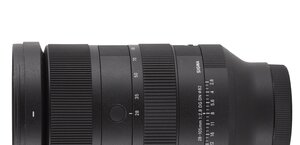Sony 50 mm f/2.8 Macro
11. Summary
- very good image quality starting up from the maximum relative aperture,
- negligible distortion,
- well-corrected coma and astigmatism,
- exemplary work against bright light,
- correct work of autofocus,
- good quality of barrel.
Cons:
- a bit too high vignetting by f/2.8,
- chromatic aberration at the maximum relative aperture could have been lower.
In this summary it would be better if we compared the Sony 2.8/50 with a Canon EF-S 2.8/60 Macro or a Sigma 2.8/50 Macro. Unfortunately neither of these instruments have been tested yet so out of necessity the tested device is being compared to the Sigma 2.8/70 Macro and the Tamron 2.8/90 Macro. Maximum MTF50 values, reached by these instruments, were about 42-43 lpmm so basically as high as the Sony’s. This result is in fact a tad better, though, because the Sigma and the Tamron were tested on a Canon 20D sensor which is smaller than the Alfa’s – their result is the equivalent of more or less 44-46 lpmm on a 10-Mpix sensor. However, both the Sigma and the Tamron had a problem with reaching outstanding sharpness at the maximum relative aperture and their results could be only described as average, good at most. In the case of the Sony you could get images of excellent quality already from f/2.8 and, compared to the competitors, it is a huge asset.
Please Support UsIf you enjoy our reviews and articles, and you want us to continue our work please, support our website by donating through PayPal. The funds are going to be used for paying our editorial team, renting servers, and equipping our testing studio; only that way we will be able to continue providing you interesting content for free. |
- - - - - - - - - - - - - - - - - - - - - - - - - - - - - - - - - - - - - - - - - - - - - - - -
The price of the lens is quite high – no doubt about it. The results in our test justify it a bit, though. The instrument didn’t have one serious slip-up in our test, all the flaws, listed under the “cons” are minor and the “pros” list is long and important. On the other hand, though, in the Sony’s focal lengths class you can find cheaper rivals as well. For instance a Canon EF-S 2.8/60 costs around 400 $ and a Sigma 2.8/50 – 300 $. If you want to own a typical portrait lens, Sony offers you a 1.4/50 model with the price around 370 $. However, if you want to have a lens for portraits and for macro shots as well you should really consider the purchase of the 2.8/50 very seriously.
Sample shots:















